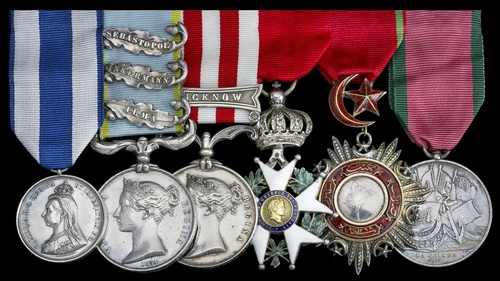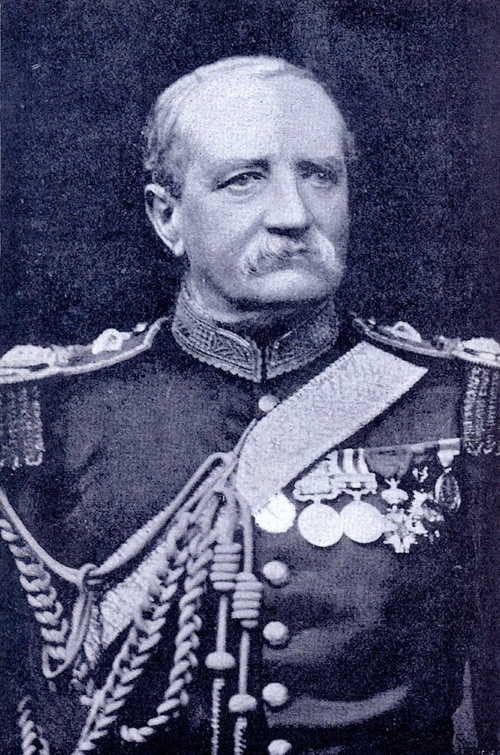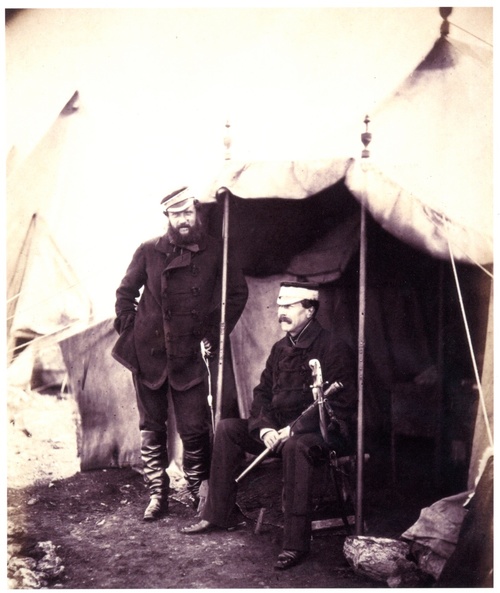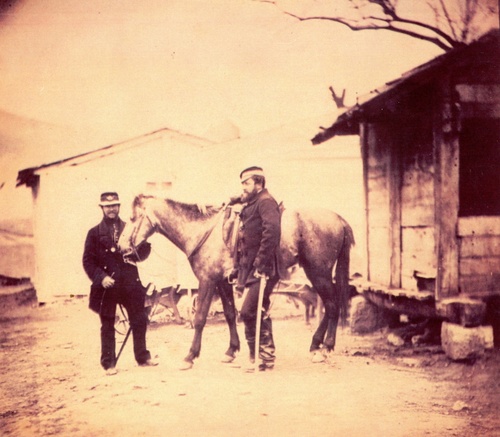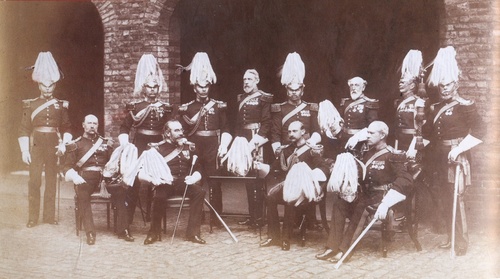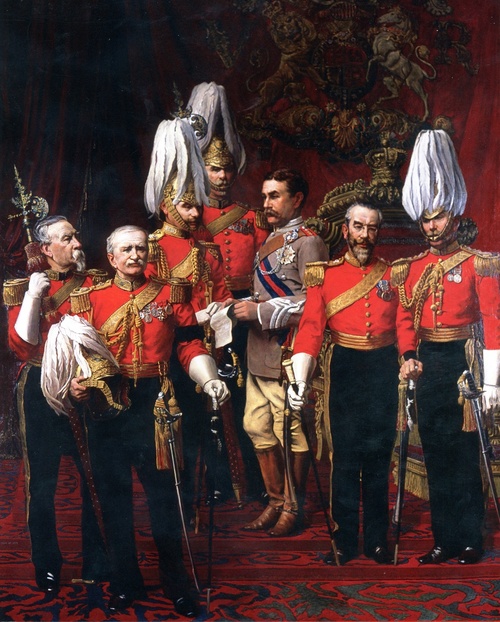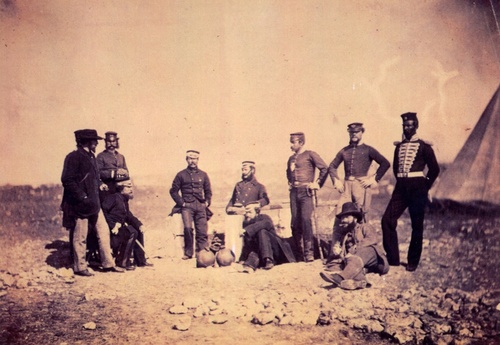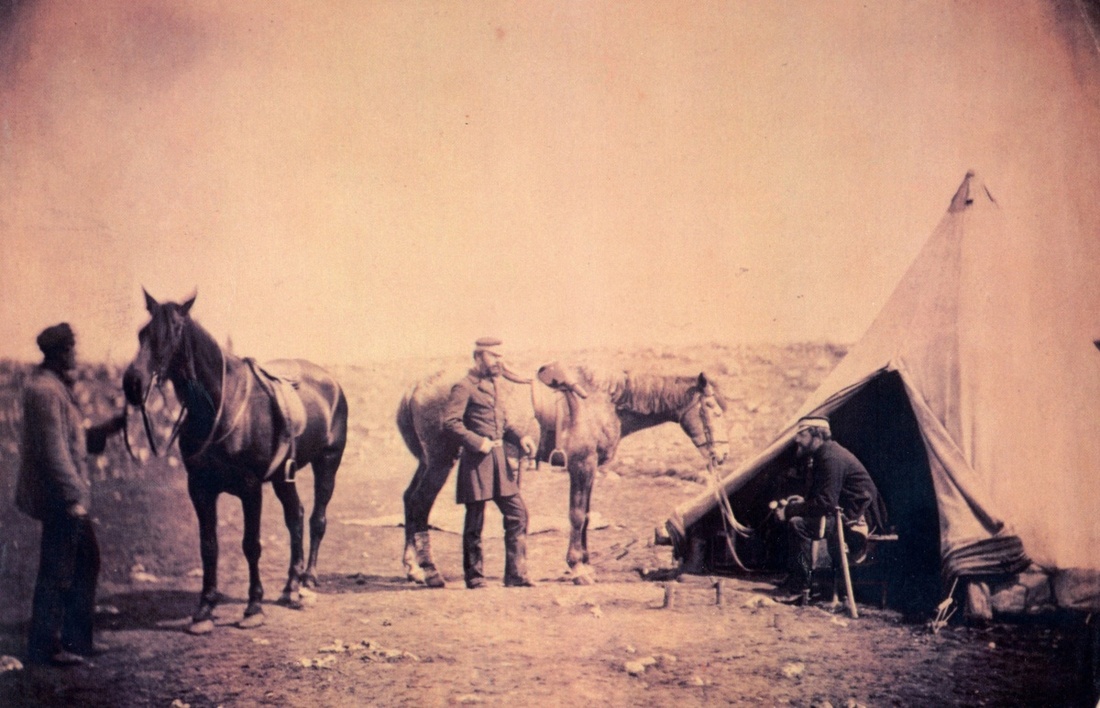Auction: 19001 - Orders, Decorations and Medals
Lot: 380
(x) A fascinating group of six awarded to Lieutenant-Colonel Sir Gustavus Hume, 38th Foot; as Sir John Campbell's other A.D.C., he took part in the first assault on the Redan and bore witness to Campbell's gruesome demise; photographed repeatedly by Roger Fenton, he became Lieutenant of the Honourable Corps of Gentlemen-at-Arms in 1878.
Jubilee 1887, silver, unnamed as issued; Crimea 1854-56, 3 clasps, Alma, Inkermann, Sebastopol (Captn. Gustavus Hume. 38th Regt.), naming officially engraved by Hunt & Roskell in large serif capitals; Indian Mutiny 1857-9, 1 clasp, Lucknow (Capt. G. Hume, 38th Regt.); France, Second Empire, Legion of Honour, 5th Class breast Badge, silver, gold centre and enamel; Turkey, Ottoman Empire, Order of the Medjidie, 5th Class breast Badge, silver, gold and enamel; Turkish Crimea, Sardinian issue, privately manufactured by Hunt & Roskell, the second with minor contact marks, thus nearly very fine, the remainder very fine or better, recently mounted by Spink & Son (6)
Legion of Honour London Gazette 4 August 1856.
Order of the Medjidie London Gazette 2 March 1858.
Gustavus Hume was born in Ireland on 25 February 1826, second son of the Reverend Robert Hume of Dublin and grandson of Thomas Hume, M.D., physician to the Duke of Cambridge. He was gazetted an Ensign to the 38th (Staffordshire) Regiment of Foot on 30 May 1843, rising to Lieutenant on 9 June 1846 and Captain in 1852. He served with the Regiment throughout the Crimean War, and was present at Alma and Inkermann.
Following Inkermann Hume was appointed Aide de Camp to Sir John Campbell, a role he shared with Campbell's nephew, Captain Snodgrass (see previous Lot). Hume was photographed repeatedly by Roger Fenton in the camp before Sebastopol. In one photograph he appears with Snodgrass, while in another he stands beside Campbell.
In May 1855, both Hume and Snodgrass accompanied Campbell on the Kertch Expedition, aimed at cutting off Russian supplies from the port of Kertch on the Sea of Azoff. Kertch had been Sebastopol's lifeline, enabling the city to withstand the siege. Once the Allied expedition reached it, the port was flattened and Russian naval power ceased to exist overnight (see London Gazette, 28 June 1855). The first assault on the Redan on 18 June was rather less successful. Hume and Snodgrass were standing near Campbell when he made his gallant dash at the Russian defences, only to be horribly struck down. From July 1855 Hume served as Deputy Assistant Adjutant General of 3rd Division.
Hume was awarded the 5th Class of the Legion of Honour and of the Medjidie. He served in India with the 38th Foot from 12 November 1857 to 9 August 1858, participating in the Siege and Capture of Lucknow. He served with Grant's Division during the summer campaign in Oudh, and was present at several minor actions. He retired from the regular army on 17 March 1863, with the rank of Lieutenant-Colonel.
Hume then joined Her Majesty's Bodyguard of the Honourable Corps of Gentlemen-at-Arms, rising to become Lieutenant of that venerable body on 20 November 1878. He appears in The Royal Bodyguard (1892), a magnificent painting by Arthur Temple Felix Clay which is part of the Ministry of Defence Art Collection. He received a Knighthood on 1 December 1880. The 1881 census records him living at Hanover Square, London with a wife and six children.
Sold with a fascinating archive, including:
(i)
Hume's bestowal document for the Legion of Honour, signed and dated 21 June 1856.
(ii)
A copy of David Edelsten's The Nearest Guard - 500 Years of Protecting the Sovereign (London, 2009), a well-researched and lavishly illustrated history of the Honourable Corps of Gentlemen-at-Arms.
(iii)
An extensive folder of research, with high-quality copies of Fenton's photographs.
Subject to 5% tax on Hammer Price in addition to 20% VAT on Buyer’s Premium. For more information please view Terms and Conditions for Buyers.
Sold for
£3,800

